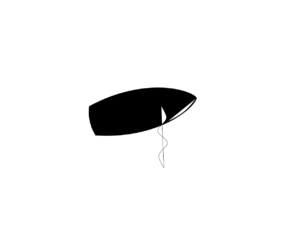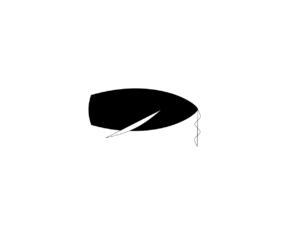Top sailors often speak of boat feel, and they have worked over many years to hone their skills at steering the boat to be fast, both in a straight line, as well as through every maneuver. In fact, straight line sailing is really a series of small maneuvers, adjusting the boat trim, sail trim and angle for the changing wind and wave patterns. While using the rudder is essential to making these adjustments quickly and exactly, it can also create drag, and overuse will slow the boat more than necessary. To reduce rudder drag, we will ideally use weight placement and sail trim to help the rudder steer the boat. Below, I describe the theory behind this, a drill you can use to practice effective boat steering, and some places where these techniques might be most effective during a race.
A boat resting in the water, without sails, will pivot about it’s center of lateral resistance (COLR) (essentially the mid-point of the keel or centerboard.) Any pressure applied forward of this point will push the bow down (figure 1) and pressure applied aftward of this point will cause the the bow to turn up (figure 2).
fig 1 fig 2
fig 2
A sailboat’s steering can be further influenced by it’s heel, with a boat turning away from it’s low side. A boat heeling to windward will bear away from the breeze, while one heeling to leeward will head up into the wind. The heel can be affected both by crew weight placement, as well as by sail trim. For this reason, easing the main often has a compounding effect, where the boat bears away because there is less effort aft of the COLR as well as less heel to leeward.
To practice steering with your weight and sails, lash the tiller in the centerline of the boat (use a quickly removable cleat or knot so you can recover steerage if needed.) Try sailing around a simple triangle or box course using only your weight placement and sail trim to change course. Communication is key here, and it may require exaggerated adjustments to initiate or stop a turn, but as you get more comfortable, you will be able to anticipate more and adjust less. Unlash your tiller, and try making those same turns with as little helm as possible, using mostly your weight and sails. You will often need a strong helm in a race, whether rounding a mark, avoiding a boat, initiating a turn, or intentionally slowing, but being able to use less than other sailors will cause less drag, and increase your speed around the course.
We can imagine this steering is most important any place where a sharp manuever is required, especially as you initiate the turn. In particular, these techniques are important when initiating a tack, at the windward and leeward marks, and when ducking another boat on a beat to weather. For example, when rounding the windward mark, it is key to ease the main aggressively, both to reduce the pressure aft of the COLR, and to allow the boat to heel to weather a bit, both of which will help the boat bear away with minimal drag. The opposite is true at the leeward mark, where coordinating the main to be slightly overtrimmed during the rounding, and the jib to be slightly undertrimmed will allow a great deal less helm to be used, and therefore the boat will carry more speed into the next leg.